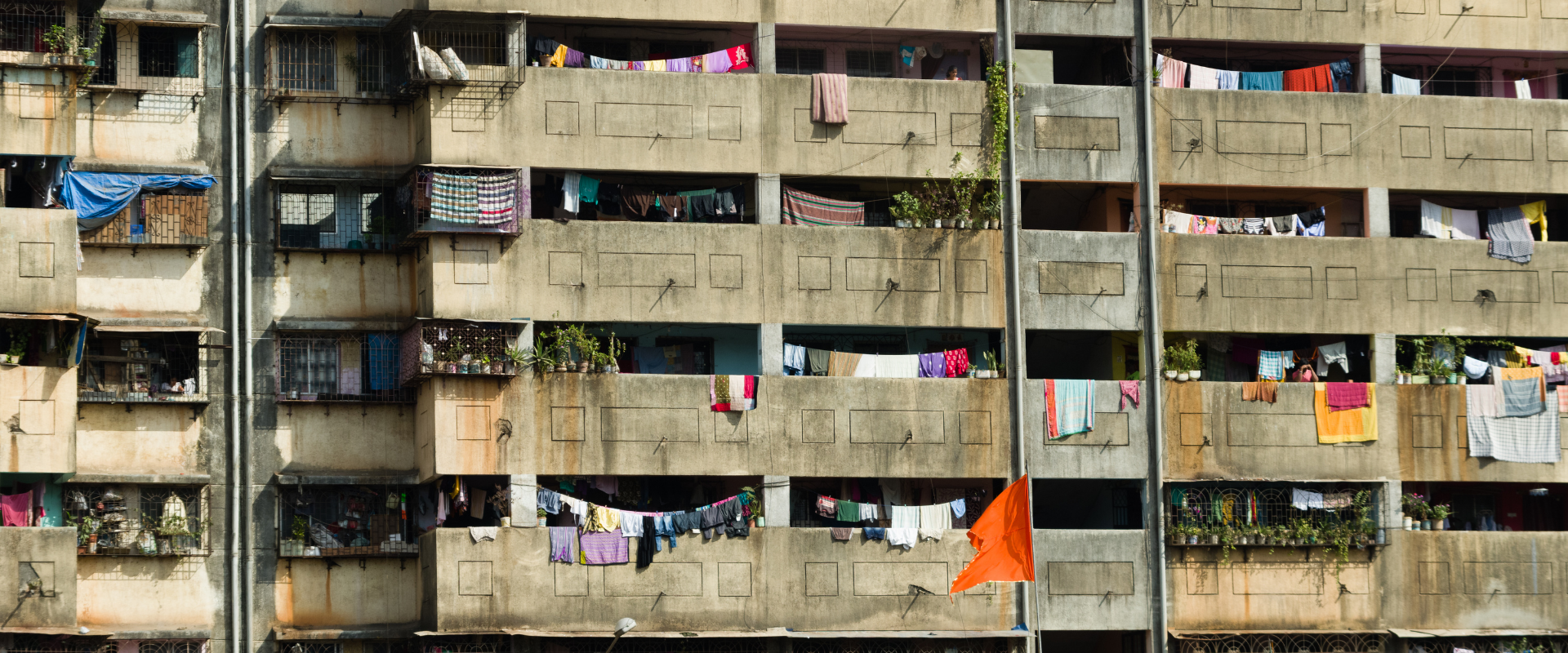The Urban Poor In Delhi May Have Homes To Live In, But, Are They Livable?
Urban poor in India lives on edge of facilities. The urban poor in Delhi may have homes to live in, but, are they livable? According to Delhi-based research organization, Centre for Science and Environment, the summer of 2022 was the second-hottest since 2010. (CSE). Additionally, warming is the winter, monsoon, and post-monsoon seasons. In such a situation, the sheer supply of homes is insufficient, and more importantly homes that should be ‘habitable’.
In the past, particularly in cities, regular heatwaves have resulted in abnormally high daytime and night-time temperatures. This occurs due to an urban area’s failure to cool off after sunset due to the overabundance of heat exhaust from air conditioners.
The same living area is shared by several people and is utilized for various purposes
All the congested houses with very low ventilation add up to making the situation even worse with climate change.
The same living area is shared by several people and is utilized for various purposes. The absence of cooling solutions and the poor quality of the dwelling unit’s materials (asbestos roofing, for example) further increase the residents’ vulnerability.
The situation ultimately takes a turn where the climatic condition with the housing of residents where very low ventilation and space to live starts affecting the health of the household members, Improvising the house becomes quite difficult because there is a lack of resources and capital.
Fewer options to stay indoors, away from the heat
According to the DownToEarth reports, the urban poor typically live in similar homes. This summer, Chandni Singh, a key author for the Intergovernmental Panel on Climate Change and senior researcher at the Indian Institute for Human Settlements, told the BBC that “poor people have fewer means to cool down” and “fewer options to stay indoors, away from the heat.”
According to Article 11.1 of the International Covenant of Economic, Social, and Cultural Rights, everyone has the right to appropriate housing. In its General Comment 4 on “The right to sufficient housing,” the United Nations Committee on Economic, Social, and Cultural Rights expanded on this idea.
The Committee decided that suitable housing ought to have at least seven fundamental components. These include cultural appropriateness, service accessibility, affordability, habitability, and legal security of tenure.
Delhi’s case
According to the Delhi Statistical Handbook 2013, 32.2% of Delhi’s population—rural and urban poor combined—lives in single-room homes. They are followed by 29.6% of people who live in two-room homes.
Since 1990, Delhi has undergone an urban reshaping that includes evictions forcibly carried out and the relocation of homes and people to outlying areas. These recent decades have witnessed the highest increase in such forced evictions since the Emergency.
According to DownToEarth magazine, in 2013, Ayona Dutta, a senior lecturer in the School of Geography at the University of Leeds, made the following observation:
The urban poor have been generally successful in being driven out of the ‘legal’ city thanks to politicians, the middle class, corporate investors, and multinational businesses who have the law on their side.
For Delhi’s so-called “illegal” residents who were given permission to live in legal dwellings as long as they departed the city, Narela and Bawana have become holding areas.
In the 1970s and 1980s, “eligible” squatters in Delhi would be given a 25 square meter parcel of land with a freehold title. They are now limited to receiving a 12.5 square meter allotment with a 10-year lease, which they are unable to sell or transfer to their heirs.
In resettlement colonies like Savda Ghewra, Madanpur Khadar, and Prayog Vihar, among other places, families have access to a block of land measuring 12 or 18 square meters that are leased. The size of the household has no bearing on the land size. This makes the traffic much worse.
In conversation with a resident of Madanpur Khadar, she shares a room with her husband, two kids, and other family members. She works as a housekeeper, while her spouse is a loader and unloader.
After their Basti (Slum) in Yamuna Pusht was demolished, they moved into their current home in 1999. They were given a 12-square-meter plot, on which they gradually constructed their home.
Further, this structure of the housing creates a lot of problems like while cooking the temperature of the room makes it really uncomfortable to sit there which starts affecting the health and using the same room for studying, watching Tv and doing other work is not easy.
In these state-provided resettlement plots, it is not possible to construct homes with separate kitchens and several rooms. Additionally, there are no financial incentives offered by the state to encourage people to build their homes.
Many Sawda households have successfully constructed two to three levels, and their wealth has grown with time. However, because housing is developed gradually, the populace must adapt to the constrained space and services. For the citizens, protecting land titles and the fundamental structure takes precedence above emphasizing the habitability of the space.
READ MORE…
- जब चाँद होगा लाल: रहस्य, विज्ञान और अंधविश्वास का सच (ब्लड मून 2025)
- How One Scientist’s Radioactive Discoveries Sparked a Double Nobel Triumph
- IIT Delhi’s Rural Technologies Going Intercontinental


